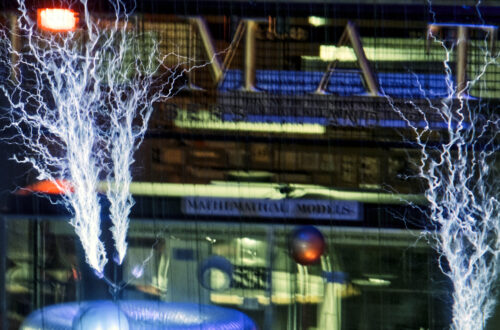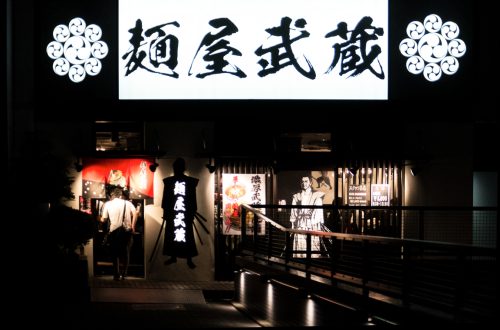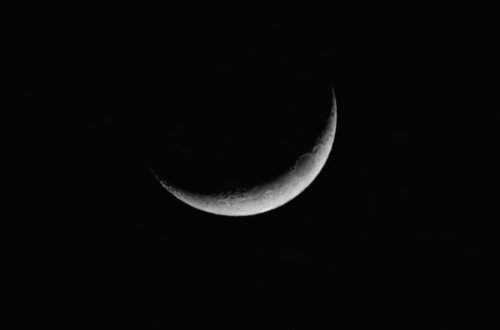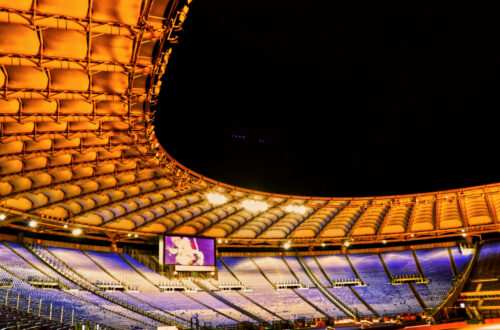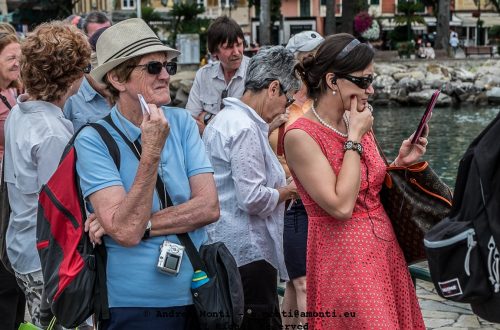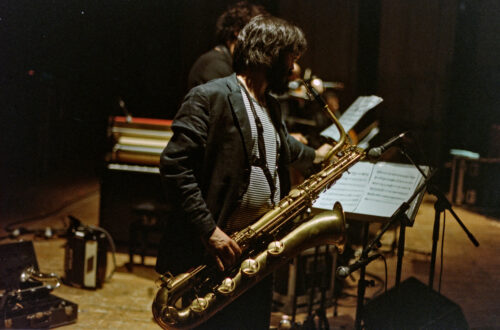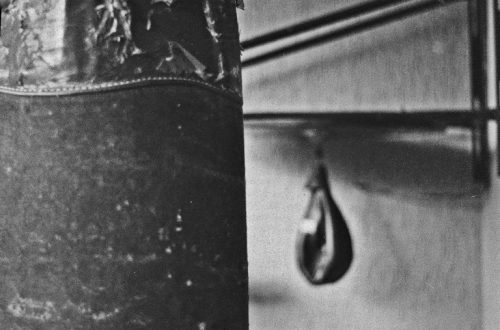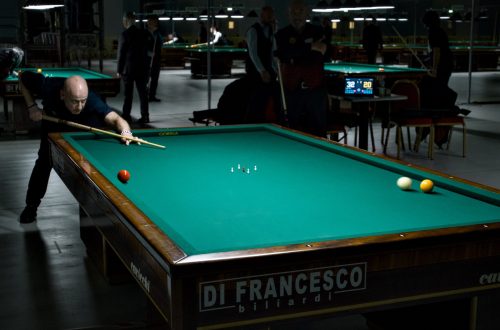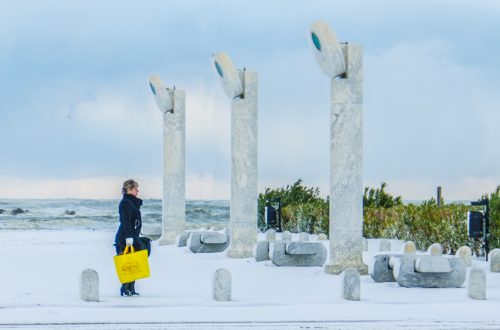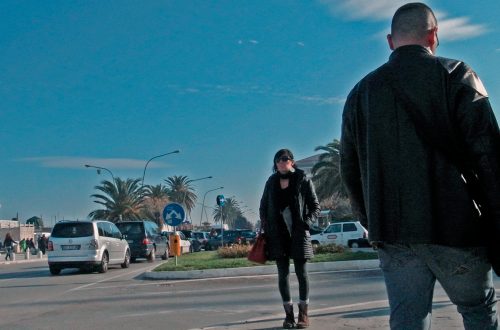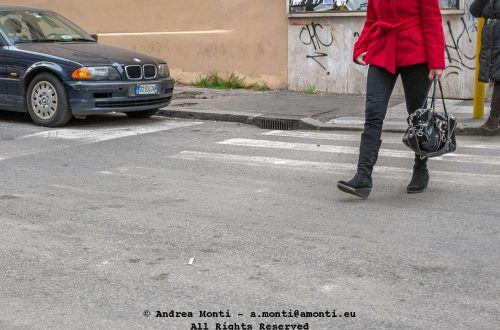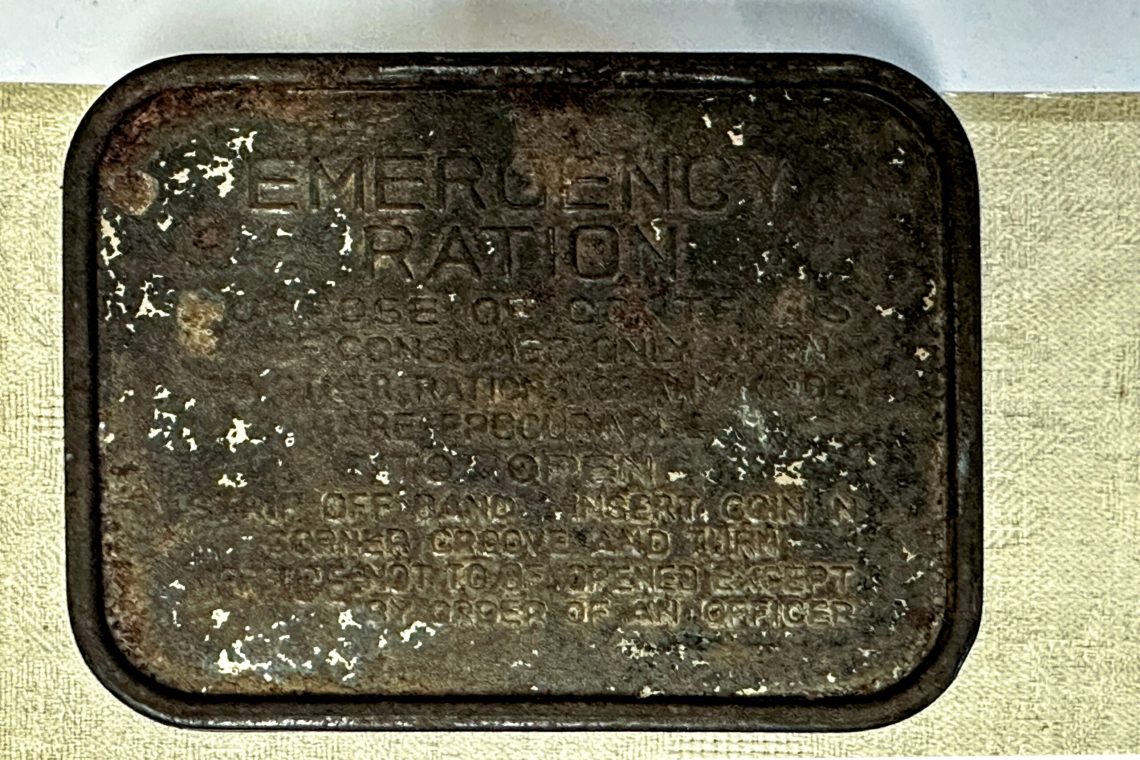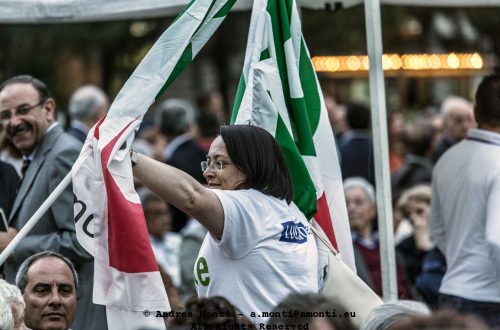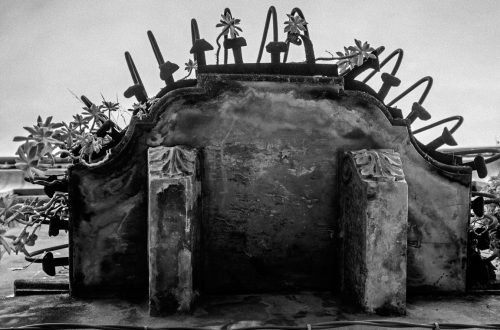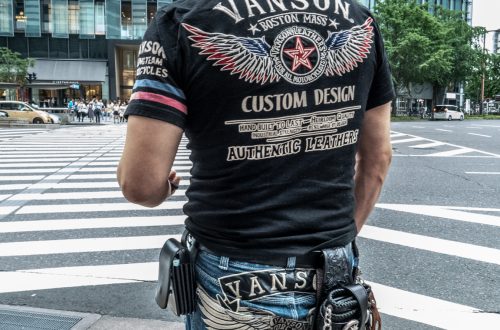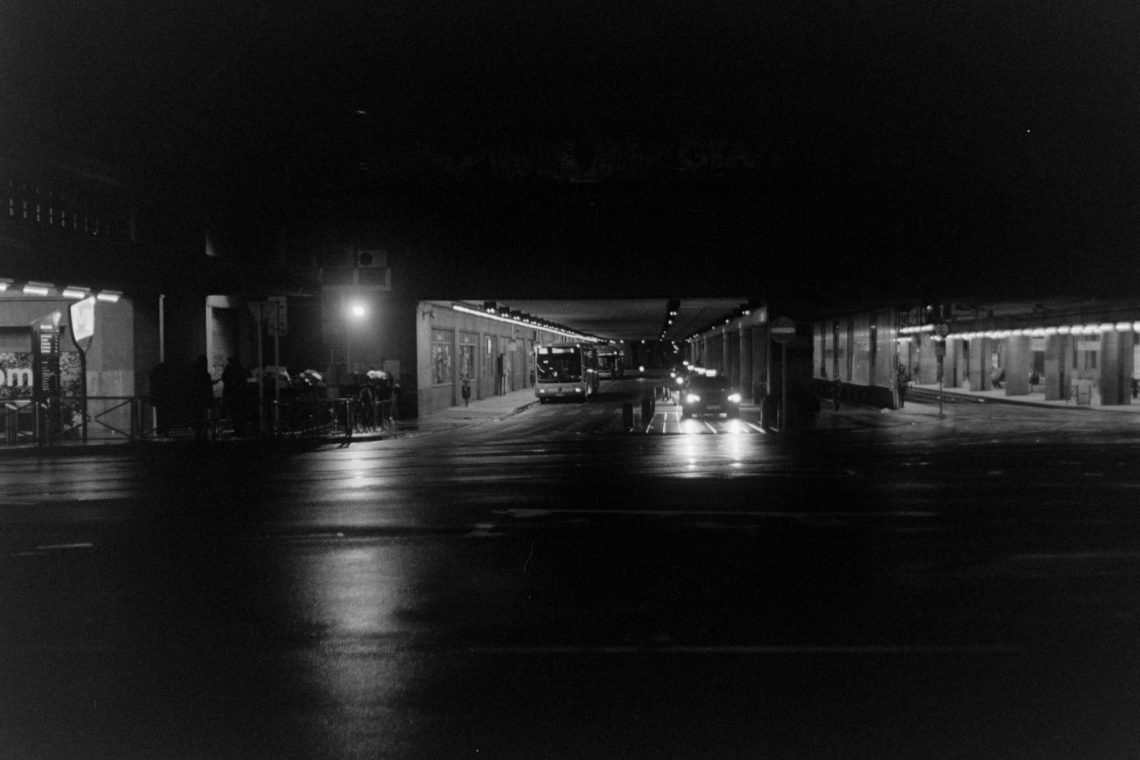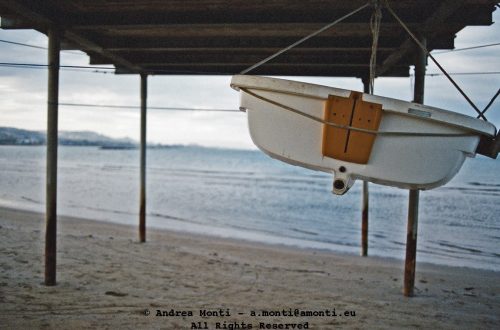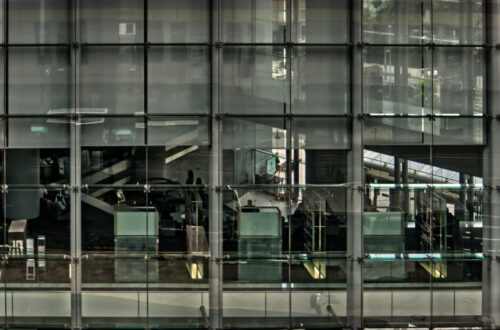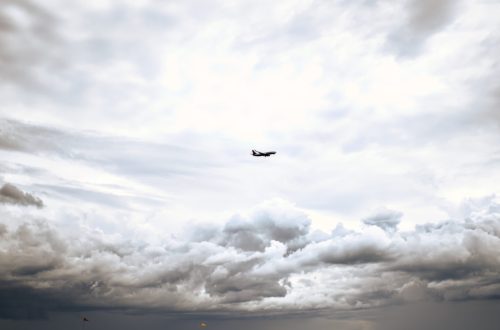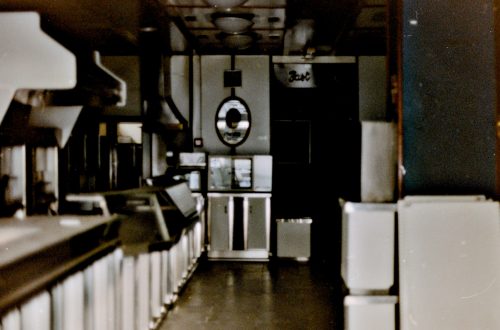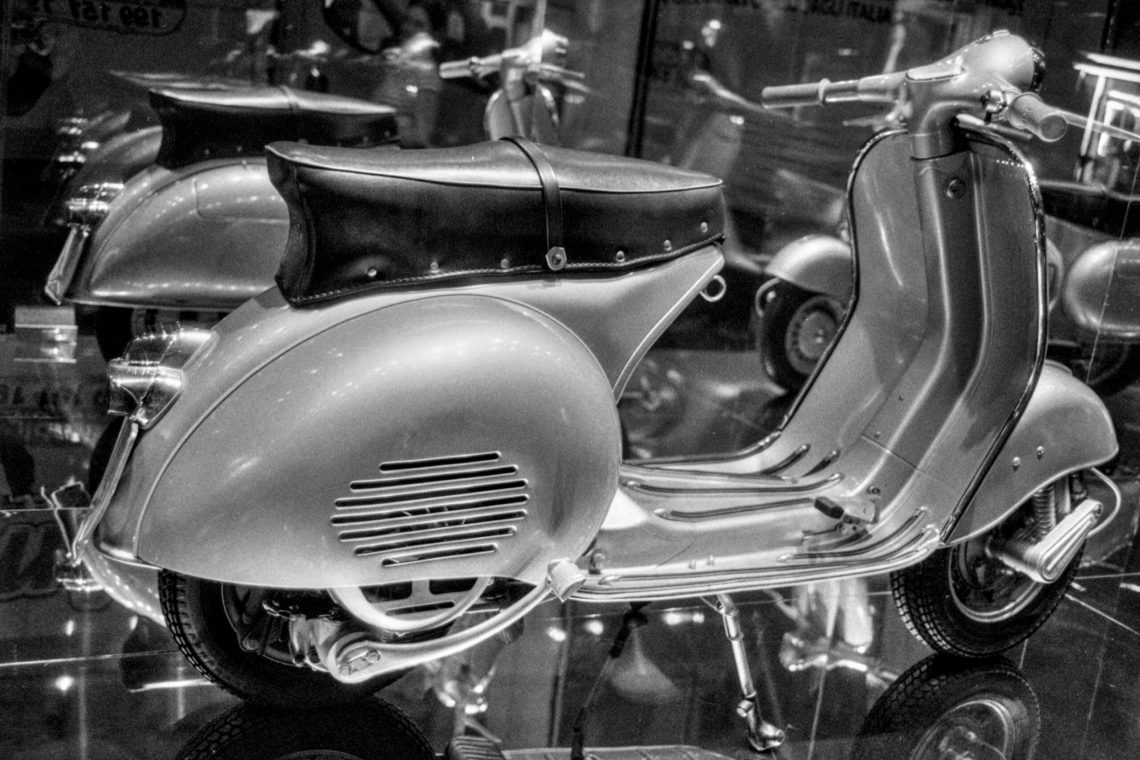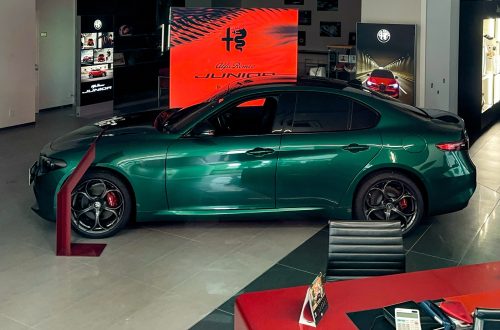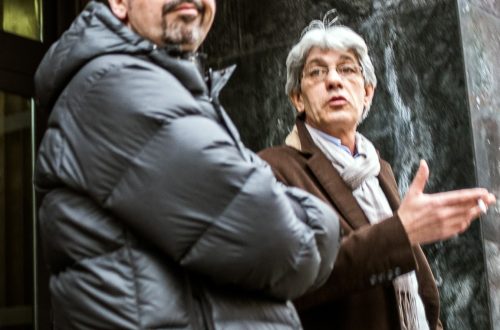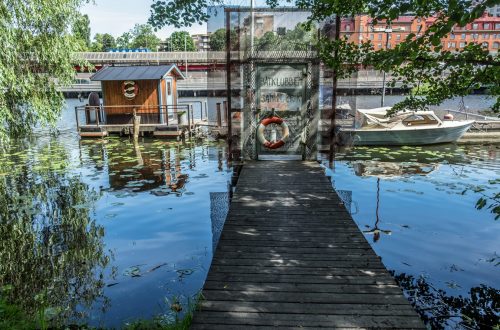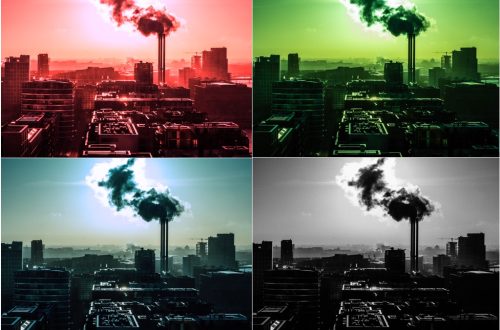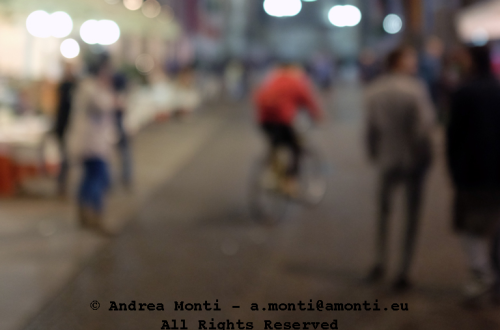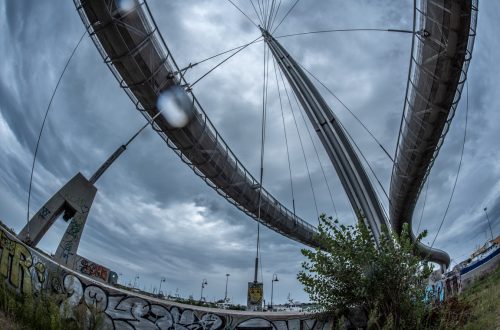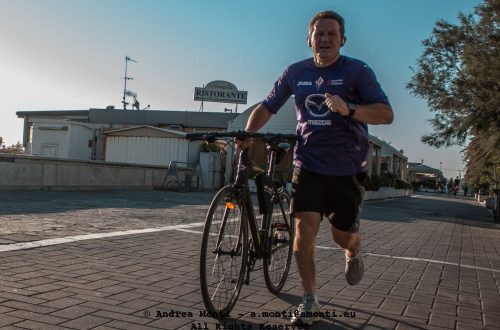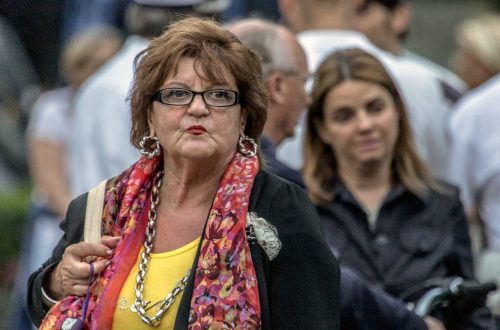-
Some odd outcomes from a photo recovering attempt using an AI
I was curious to see how an AI would handle a bad photo, so I uploaded this black-and-white shot taken in the area around Kyoto Station with my Nikon 35TI. Initially published on 35mmc.com. The photo itself —the one published as featured image— it’s part of a long term project to show the presence of Alfa Romeo (a brand I’m a big fan of) in the Japanese streets. It isn’t anything special, but I needed a starting point (the worse, the better) so, after having uploaded this poor shot, I prompted the software like this: As a professional in photo restoration and post production restore this photograph of an Alfa…
-
Shooting Sanda (Chinese Kickboxing) Bouts
These photographs were taken during the 2025 Italian Sanda Championships as part of the sports photography course that I teach at the University of Chieti-Pescara in Italy. Initially published by 35mmc.com How the game works Sanda is a Chinese martial art belonging to the kickboxing family. As in kickboxing, fighters trade punches and kicks, but unlike in Thai boxing, they are not allowed to use their elbows or knees. A limited number of throws are permitted, including leg sweeps, reaps and souplexes. Each bout consists of three rounds, and winning two of them is sufficient for victory. However, this is easier said than done: the action is fast-paced, the fighters…
-
Shooting an Outdoor Volleyball Match
The 2025 IVVA European Veteran Volleyball Championship took place in my hometown of Pescara last May, so I took the opportunity to get the students on the sports photography course I teach at Chieti-Pescara University to practise. Here are some random thoughts about lessons learned. Initially published by 35mmc.com Focal length One of the main challenges of shooting sports such as soccer, basketball and —of course— volleyball, is the choice of the focal length. The IVVA Organising Committee granted us permission to stay in close proximity to the courts. This allowed the use of a 35mm —or so— lens to take ‘scenes’ documenting the whole dynamics of a ‘moment’. In this case,…
-
On Detachment. Or ‘If You Love Something, Set It Free’ (cit. Sting)
A number of philosophies and religions preach the virtue of detachment from things as a path to enlightenment. When applied to gear, this advice won’t only save your soul —if you believe there’s one— but also your money and, last but not least, your photograph experience. This means avoiding the development of ‘feelings’ towards a camera or a lens that shift from appreciating their value as a tool to some sort of ‘personal engagement’. Initially published on 35mmc.com As odd as it sounds, such an attitude towards an inanimate object is more frequent than one may imagine. A paradigmatic case is the attachment of AIBO’s owners to their robotic pets:…
-
On Tips’n Tricks to ‘take you photos to the next level’
I recently asked a friend, who works on the editorial side of the music industry, to share his thoughts on one of my photographs taken during a flamenco concert. His response was a deep and thorough analysis, which I will spare the readers in full. In brief, however, he praised the lighting as particularly effective for flamenco photography, noting how the chiaroscuro effect recalls the classical paintings of Caravaggio. Regarding the composition, he observed that the bailaora’s body fills the frame dynamically, without ever feeling cramped. In his conclusion, he remarked that the image captures the very soul of flamenco. As flattering as this commentary was, I must admit that none…
-
Shooting Italian 5 birilli
Thanks to the support of the Italian Federation of Sport Billiards, I had the opportunity to access the playing area of a billiards national competition with the students of the sports photography course I teach at my university. It was a very good opportunity to learn how to take photographs in an unusual environment for people more used to outdoor or ‘traditional’ disciplines. Initially published on 35mmc.com.
-
One Shot (Plus One) Story – All That Lasts
These three bags of rubble are all that remains of a ‘renovated’ building. By chance, though, I took a photo of the building as it was being demolished. The difference in the colours of the rooms caught my attention. I wondered why people had chosen to paint each room in different colours. Maybe the blue was for the children? And the green was for the kitchen? And what about the red and the yellow? These colours tell the story of a family, a story that just ended when their home was demolished.
-
One Shot Story – Soulless Places
Official brand stores are a powerful way to assert a company’s presence. They are a bold statement of strength and confidence. They send a message to the customers and to those who aren’t yet: look! whenever you go we’re there for you(r wallett). Admittedly, when travelling abroad it is sometimes reassuring to find a ‘familiar’ place – a cafeteria, a fast food, an electronic gadget shop – where everything works ‘as it should’. On the other hand, though, this strength has a serious downfall. Where was this picture taken? Of course, you may guess the location from a few clues (for instance, it was likely taken in a small Italian…
-
5 frames exploring the Sporting Gun Culture in Italy
Firearms and gun culture are a very sensitive issue. Privately owned weapons are associated to mass shooting and individual killings, street violence and law enforcement abuses. When confronted with the killing of innocent people, talk is cheap and it is perfectly reasonable to invoke restrictions and even outright bans. There are, however, many people who are not involved in ‘prepper’ or ‘zombie apocalypse is coming’ state of mind, and who only want to practice a sport or foster their interest in military history, mechanics or other types of knowledge related to building and handling of a weapon. So, whatever the view on the matter, from the absolute opposition to any…
-
5 Frames from our Tragic Past Shot with an iPhone 14 Pro Max
The remains captured in these photographs come from a small war museum in Orsogna, a small town in the interior of my home region, Abruzzo. In World War II Orsogna and other towns – such as Ortona, where there is a memorial for the Canadian soldiers who fell in the Moro river fierce battle – were part of the German Gustav Line. They were theatre of bloody battles and still today, wandering around with a metal detector, it is possible to find a lot of things reminding of these tragic events. This is exactly what motivated a group of local historians to search for, collect and classify as many things as possible, and finally,…
-
Why a Longterm Relationship (with your camera) Makes You Feel Good
There is no ‘forever’ in life (life included), and apart from more mundane matters, this is especially true of photography. In fact, the ‘infidelity rate’ that affects many relationships with cameras and lenses is only tamed by the money it takes to break them (and sometimes even the lack of money does not stop them from happening). But at least when it comes to photography, the tranquillity of a stable relationship has some advantages over the excitement of an ever-changing course. From daily and continuous use comes confidence, and from confidence comes a Zen-like state of mind that makes the body to react automatically when the primal part of the…
-
DSLR-like…?
I decided to write this post after having stumbled across the next ethusiast review of a smartphone published on a reputable magazine, claiming that the device can deliver ‘DSLR-like’ photos. In fact, as is often the case with ‘camera experts’ who work for a magazine or earn money by posting videos making funny faces on social networks, it was just a rewrite of the manufacturer’s product specifications and promotional material. There are few things, in photography, I dislike more than than these ‘DSLR-like’ claims made in the advertising of smartphones and compact cameras because ‘DSLR-like’ is the archetype of a meaningless statement made to lure people into using an arbitrary benchmark…
-
5 (random) frames of Bruxelles with a MIR-1B, a Pentax ME Super and a Kodak TMax400
The late hours of a day are dangerous times, because this is when the mind, lacking tasks, begins to look for a way to keep itself busy. To make a long story short, this is why, against what the common sense would have suggested, I decided to take a stroll in a (very) cold winter evening along and around Avenue Louise in Bruxelles to test a MIR-1B 37/2.8 mounted on a TMAX 400 loaded Pentax ME Super with an M42 adapter. Initially published on 35mmc.com. As much as this is not a ‘field test’, I was unfair to the lens because I used it in challenging conditions, starting with the…
-
Selling Italian Ice in Boston
Sales culture is one of the most distinctive traits of American anthropology. The foundations of modern marketing strategies date back to forerunners such as P.T. Barnum’s ‘have a little something for everybody’ slogan and Edward Bernays, the father of public relations. It is ingrained in popular culture phenomena such as garage sales, lemonade stands ran by kids and jokes about used cars salesmen. Sales culture is also paired with customer (not consumer) culture, as in the ubiquitous mantra ‘customer is king’, which ‘shapes’ people’s attitudes in terms of demanding fairness and a proper ‘bang for the bucks’. – Initially published on 35mmc.com When it comes to selling, creativity knows no…
-
Sting of the Vespa
Vespa, in Italian, is not only the name of the stingy and frightening wasp. The word also identifies one of the world’s most famous examples of industrial design, dating back to 1946, and made internationally famous by the 1953 Hollywood motion picture Roman Holiday, starring Audrey Hepburn and Gregory Peck. Initially published on 35mmc.com The creator of this iconic scooter — an example of a perfect blend of ingenuity, style and appeal — was Corradino D’Ascanio. An aeronautical engineer from my home region, Abruzzo, he also designed and built the first helicopter, whose first test flight took place in the city of Pescara, a town near Popoli, a small village in…
-
To Do or To Own? (or the Photographer’s Dilemma)
To Own or To Do is the photographer’s version of Erich Fromm’s dilemma posed in his famous essay, ‘To Have or to Be’. I don’t have the authority to talk about a complex topic such as the relationship between individual frustration or lack of accomplishment and compensatory or self-delusional behaviour. I would rather like to focus on how putting gear ownership over gear use affects the ability to take meaningful shots. Initially published on 35mmc.com Like many fellow photographers, I have been affected by the Gear Acquisition Syndrome, which in my case has manifested itself not in a quest for a —whatever it means — ‘perfect image’ but rather a…
-
5 Frames with various cameras – Ferrari On The Road(s)
Sports car photography usually happens in specific settings such as motorshows, official events, race tracks etc., where lights, crowds, fences and limited access to restricted areas are an issue. Doing the same on the street, however, is no less challenging as things happen unpredictably and, unless taking photograph of parked vehicles, there is no time to compose – Initially published on 35mmc.com In this photograph of a Ferrari F8 Tributo, the framing makes the car the focal point, and even though the door on the left adds a bit of visual clutter, it doesn’t detract from the overall result. The following image illustrate the trade-offs of reacting in real time…
-
A Japanese Luthier and a Fingerstyle Player from My Home Region (and My Past) – A One shot story
I took this photo at GuitarPlanet, in the Ochanomizu district of Tokyo, because I was intrigued by the different bracing of the guitars’ lower backs. The picture in itself has no particular value, but on closer inspection it revealed a story linking a musical instrument, a Japanese luthier, a region of Italy (Abruzzi) and my past. – Initially published on 35mmc.com Pixel-peeping the photo, I noticed that the lower back in the middle bears the mark of Morris Guitar, a renowned Japanese acoustic manufacturer. The name rang a bell, so I went to their website to see what caught my eye. After some wandering around I landed on the page listing the…
-
Mir-20 20mm 3.5 on a Pentax K1-II – A Field Test
Photographing with a 20mm lens is quite demanding on the eye, as the composition has to take into account many more objects than with a normal prime or telephoto lens. As a result, it is very easy to get meaningless ‘postcard-like’ images. Not having used such a lens before, I certainly fall into the latter category, so the following photos (possibly, but only one) only serve to show some of the optical features of the lens – Initially published on 35mmc.com Resolution Despite its age (the lens was marketed between 1973 and 1996), the optical resolution is not bad. In this image, apart from the chromatic aberration, you can clearly…
-
One Shot Story: Behind the Fence
There is nothing special about this photo in itself, but when placed in context, it changes the way we may look at it – Initially published on 35mmc.com The photo was taken in the fishing neighbourhood of my home town. Behind the fence erected by the developers were the fishermen’s small one-storey houses. Once a testament to the hard life they endured, over time the neighbourhood was abandoned and the houses gradually fell into disrepair. Now, for security reasons, it is not possible to look through the fence and see what the developers are planning to build in place of this small part of the neighbourhood. I could ask the…
-
7Artisans 35mm 0.95 – Testing this Fujifilm X Mount Lens in a Demanding Environment
So far I have been very happy with the 7Artisans 35mm 0.95 in X-mount, but I have only tested it in non-demanding conditions. Although the results were promising at first sight, only a real test could give a definitive verdict (at least for me). So I decided to put it on trial last December 13, shooting ‘La Cenerentola’, Gioacchino Rossini’s melodrama at the Teatro Marrucino in Chieti (IT), together with the ‘battle-tested’ Fujifilm XF 18-120. Initially published on 35mmc.com Did it work out? Let me spoil the conclusions: I really like this lens in absolute terms and not because of its value for money. The colour reproduction is excellent, the resolving…
-
One Shot Story: (Un)Available Coin Lockers at Shin Osaka Station
コインロッカー, the coin-operated lockers, are fundamental to travel around Japan: this is the first lesson any first-timer to this Country should learn beforehand. – Initially publishd on 35mmc.com Almost ubiquitous, they are plentiful in train stations and airports and are a convenient way to get rid of your luggage for a few hours or days while you are on a stopover. Until a few years ago, finding an empty コインロッカー was not such a daunting task, even when there were large numbers of tourists. Now, however, things have changed for the worse. Recently, on my way to Tokyo from Kyushu, I did —as the automatic PA system of the Shinkansen likes…
-
A Night at the Opera – Plays and Opera Photography
This is an abbreviated version of a talk I gave to a local chapter of the Italian Federation of Amateur Photographers (FIAF) on the challenges of photographing in a Teatro all’italiana environment. A word to the wise: this post has just a few pictures because it talks about what happens behind the camera and not about what happens in front of it Initially published by 35mmc.com To approach professional photography in Italian-style theatres, it is essential to understand and deal with a series of difficulties and critical issues that characterise this particular environment. The Italian-style theatre, with its architectural structure, lighting layout and show dynamics, imposes a series of technical and…
-
Colour, Daily photo, Downtown, Nagasaki, Osaka, Photography, Streets&Squares, Thoughts, Tokyo, Travels, Yokohama
Why You Should Only Shoot in Your Backyard (or ‘The Art of Belonging’)
What do these pictures have in common (apart from having been taken in various places in Japan)? No, they don’t have the same look and feel, composition or use of light, nor they convey a particular meaning. What they have in common is that they’re just dull and boring —meaningless, indeed. This picture of the Yokohama’s Chinatown Dragon is hardly different than the others available on the Internet. Initially published on 35mmc.com It shares a similar fate with this one, taken last Mid November in Osaka, and, as Google Lens mercylessly shows, with this one, shot in Omura, near Nagasaki. One can hardly say that this is a never-seen-before view of Tokyo’s Kyu-Shiba-rikyū Gardens, or of…



